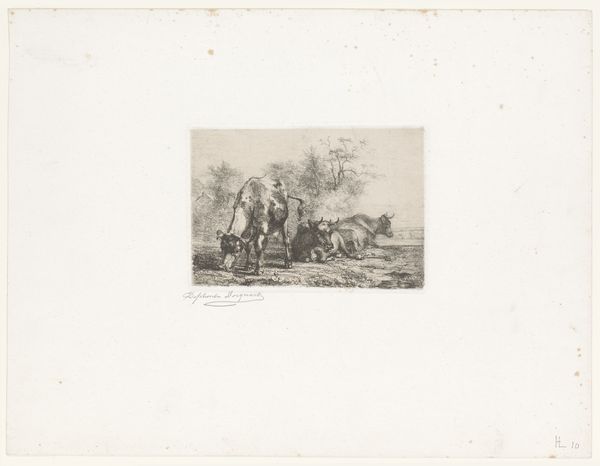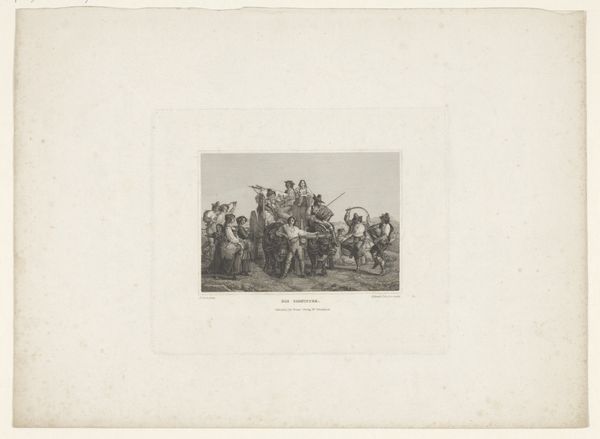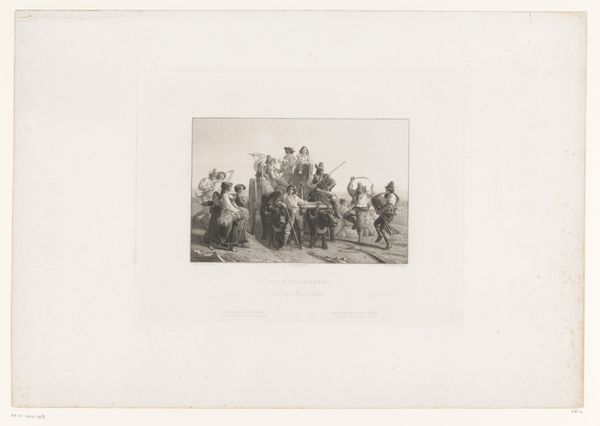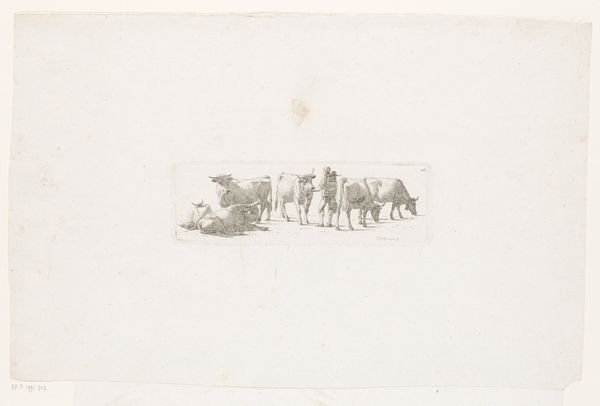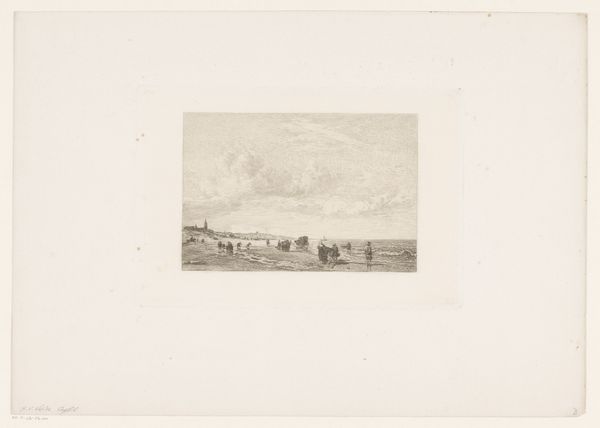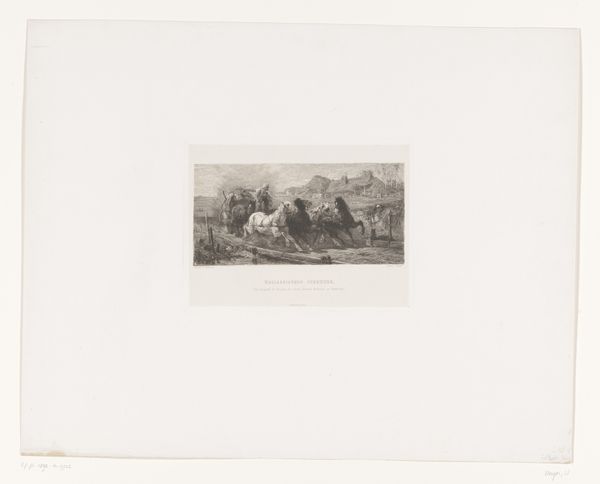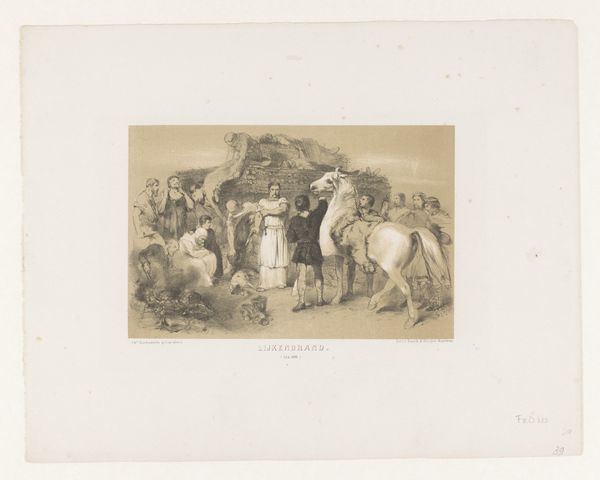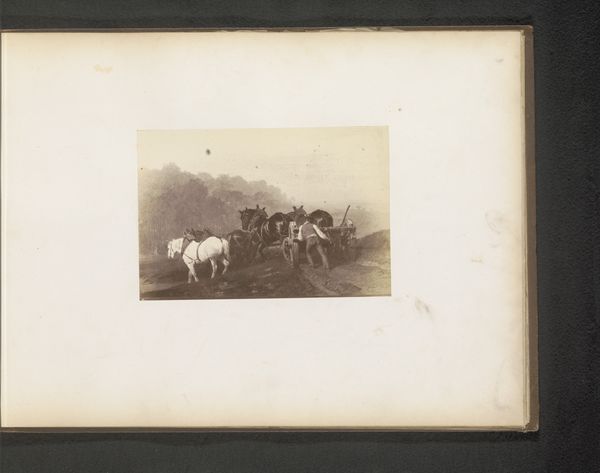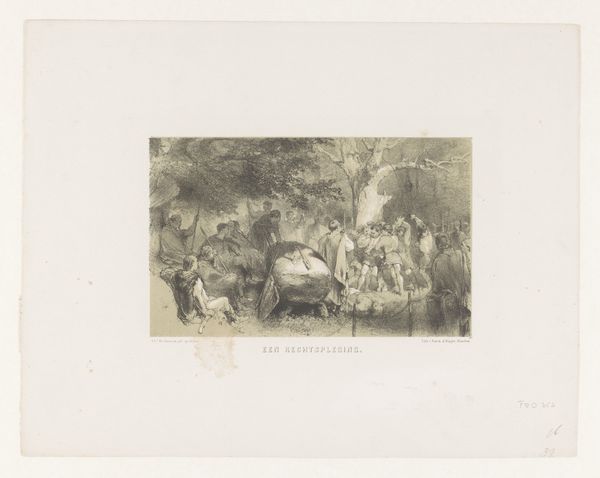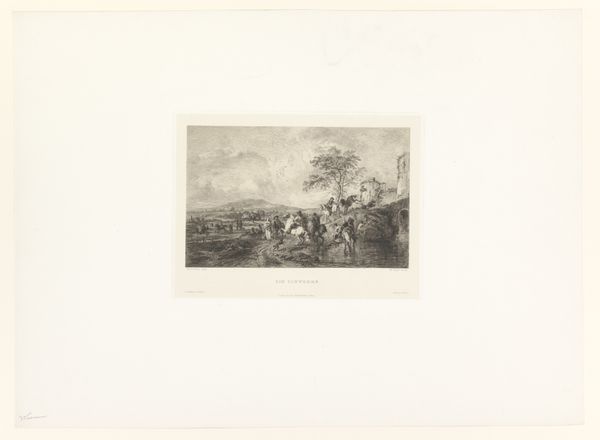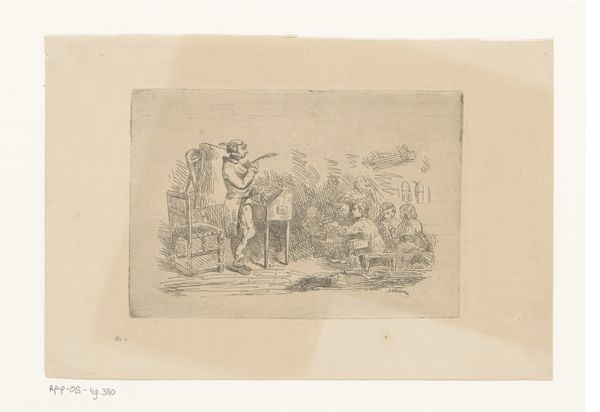
Dimensions: height 120 mm, width 145 mm
Copyright: Rijks Museum: Open Domain
Editor: This is "Figures by a Hay Wagon Pulled by Two Cattle," an etching by Ildephonse Stocquart, created sometime between 1829 and 1889. It feels almost dreamlike to me, this snapshot of rural life. What do you see in this piece? Curator: I see a beautiful dance between the earthly and the symbolic. The hay wagon, burdened and pulled by oxen, it's such a familiar image, yet it resonates with themes of labor, sustenance, and the cycle of life, a scene repeated through centuries. Note how the artist renders the hay not simply as stacked grass, but as a mass, almost cloud-like, towering over the figures. What do you suppose that implies? Editor: Hmm… maybe a commentary on the importance, almost reverence, for harvest? Like, it's not just food, but something greater? Curator: Precisely! This work isn't just a recording of a mundane task; it's imbuing that task with deeper meaning. Consider, too, the diminutive figures. Are they dwarfed by their labor? Or connected to something timeless, participating in the rituals of survival? Think about how such imagery, of humans working in harmony with the land, held significance long before and continues into our modern psyche. Editor: That’s fascinating. I hadn't considered the relationship between scale and the overarching theme. So it's about more than just a picture; it's about cultural memory? Curator: Indeed! The symbols, even seemingly simple ones, trigger a collective recognition. Stocquart reminds us of the past that shapes our present. It speaks of resilience and the land's enduring power. Editor: Wow, I'll definitely look at these types of genre scenes with new eyes now! Curator: I’m glad. Now you see how even in the smallest details, powerful stories and beliefs reside, echoes of human experience connecting us all.
Comments
No comments
Be the first to comment and join the conversation on the ultimate creative platform.
